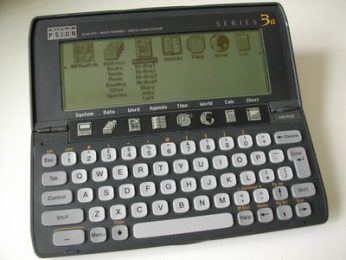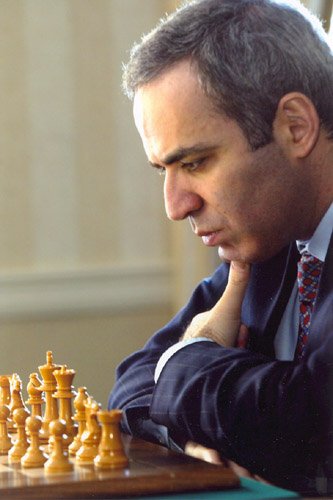Paving the way for a new millennium
In the last decade of the 20th Century, Information Technology brought about considerable changes to the way we live and work. Telecommunications connected homes and offices to the Internet and World Wide Web giving access to all kinds of information and services. Dominant “gorillas” in the market made ever bigger and more expensive systems while agile, new, start-up companies exploited the internet, and share prices soared. But Y2k cast a dark shadow over the millennium celebrations.
Roots of Change
The 1980s were a period of rapid change in telecommunications and in personal computing that laid the foundations for a revolution in the way businesses and the public use technology. At the end of the decade, in 1989, at the scientific research establishment, CERN, in Geneva, Tim Berners-Lee invented the World Wide Web and started developing Hypertext Markup Language (HTML). He originally intended only to network the CERN computers to share information and data within the organisation. To do so, he created the first web server which led to the launch of the World Wide Web at CERN in 1991. Three years later, Tim Berners-Lee made the source code freely available, and that combined with the growing global communications network, the Internet, started an information revolution that, by the end of the century, would change many aspects of our lives at home and work.
Modems and Dial-Ups… Internet in the Home
The public did not have access to the World Wide Web until commercial companies provided technology to “dial-up” via a home telephone line, using a modem. Pipex was established in 1990 and began providing dial-up internet access in March 1992, as the UK’s first commercial Internet provider.
David Clarke, later to become Chief Executive of the professional body, BCS, The Chartered Institute for IT, ran two of the UK’s early UK Internet Service Providers. Here, he talks about Netcom, Virgin, their rapid expansion, and Google’s arrival in the UK.

Internet users from the 1990s will remember fondly the sounds which preceded access to the world wide web.
Courtesy of Ogg Vorbis copyright free
The rise and rise of Microsoft

The IBM PC was launched in 1981 but by 1990 it was still not a common feature of British homes with only 17% of families having a machine. While it was invaluable for word processing (often linked to a dot matrix printer with tractor feed paper), spread-sheeting and rudimentary graphics, the functions and software that are now taken for granted were not available.
However, as the 90s progressed it became more common and by 2000 use at home had more than doubled to 38% and was on a steep growth curve, as it became central to a number of new home activities.
Three (at least) big changes drove growth in the use of PCs at home and they all had a lot to do with Microsoft.

The browser unleashed the power of the www via the Internet and gave rise to the Browser Wars of late 90s. Mosaic had led the charge from 1993 and developed into the market-dominating Netscape Navigator. However, Microsoft joined the game in 1995 with Internet Explorer and IE2 was offered as a free download, knocking Netscape’s market share. In 1997 Microsoft integrated IE4 into Windows, giving it a decisive advantage over the competition.
The email had been around for years but most people were just not connected to it unless they were working in a networked office with a dedicated email program. So it took the arrival of public Internet access to make it real for most people. In 1996 webmail clients started taking off, with MS Internet Mail and Hotmail. By 1997 there were 10M users worldwide, so in 1998 Microsoft bought Hotmail and things really took off.

From 2 January 1990 to 31 December 1999, Microsoft’s share price increased by nearly 100 times. In 1999, Microsoft was the largest company in the world, boasting a market capitalisation of $614 billion, and thriving because of its fast-growing personal computer market dominance.
Internet Start-Ups
In the mid-1990s Internet shopping became a reality, coinciding with the first Internet cafes and dial-up modems in the home. Internet start-up businesses drove huge growth in the sector as Internet entrepreneurs saw an opportunity to build tech businesses and digital marketing became a new field of expertise.
Interactive Investor enabled anyone with a PC and Internet access to trade in shares. Sherry Coutu CBE is a serial entrepreneur, Angel investor and Non-executive director based in Cambridge, UK and originally from Canada. She started Interactive Investor in 1995 to create an online service and remove the frustration of looking at obsolete, out-of-date pieces of paper to understand mortgages. It began on mutual funds but subsequently allowed trading of equities, pensions and other financial services. When the company was floated on the stock exchange in 1999 it was 33 times oversubscribed and the share price more than doubled on its first day. Sherry has since gone on to invest in approximately 50 companies, including household names, such as New Energy Finance, Lovefilm, and Zoopla.
In 2015 Sherry was voted one of the most inspiring women in Europe and named one of the most philanthropic entrepreneurs in the UK.
David Barker was born in Manchester in 1971 and grew up in a working-class background in the Moston area of Manchester. When the Internet arrived, David realised that this was the future. He says: “I had a real vision of its potential… in 1994 there was no one really doing Internet, so you couldn’t leave and be employed by someone else, you had to leave to become an entrepreneur and create a business.” David and his three colleagues established Moonfish, a digital marketing company in 1994. Since 2005 David has been innovating new social enterprise start-ups using Tech for Good.
Pocket Technology
The 1990s was the decade that saw the growth of mobile phone technology. From the brick-sized cellular handsets of the 1980s, the development of the RISC microprocessor meant that complex functions could be performed without needing large batteries. This allowed mobile phones, to be miniaturised to pocket size, kicking off a revolution in personal communications.
The idea of technology that you could carry on your pocket was an aspiration before the 1990s, with successive devices doing more and more: programmable calculators, music players, and digital organisers all appearing in the 1980s or before but the 1990s saw several breakthroughs.
The mp3 standard to store music on a PC was accepted in 1992 and in 1998 first personal portable mp3 player enabled music on the move without carrying a tape or disc player.
In 1990 Acorn, the company that developed RISC spun off a new company ARM Holdings Ltd and its technology is now in use in one billion phones around the world. ARM designs chips: it does not manufacture them and regards that as key to extracting maximum value from its ideas. In 2020 ARM was valued at £31Bn. Simon Segars became CEO of ARM and talks here of his early days in the company, how the ARM chip was invented and the importance of ARM’s operating model.


The Nokia 3210 released in 1999 became a teenage fashion item. It slipped into your pocket, allowed texting under the desktop and PAYG deals made ownership for teenagers a reality on a pocket money budget.
David Potter was the founder of Psion, which was a market leader in the 1980s organisers and developed through the 90s, eventually allying with other technology companies to form Symbian, which laid the foundations for many future concepts of mobile technology. Here he talks about the evolution of the product and the company.
Dotcom Boom and Bust
1995 marked the start of the dot-com bubble. There had been huge investment in internet companies during the 1990s and massive growth in the market. By 1998 there were an estimated 320 million web pages and by the year 2000, one million people were employed in the IT industry in the UK.
Over-investment in Internet Start-Ups and excessive stock market speculation eventually led to uncertainty and share values plummeted. By 2001 the inflated dot-com bubble of the 1990s had burst.
Geoff Squire OBE was CEO of Veritas in the year 2000 and saw it become the 3rd most valuable software company in the world.
Nic Birtles was working in Silicon Valley around the year 2000 and describes here the effects of the bursting DotCom bubble.
A Brave New World: Artificial Intelligence
The history of Artificial Intelligence predates the first commercial application of IT but it continues to be an innovative and pioneering area of study. AI has taken longer to materially affect our lives than many other types of IT and tech but it will probably have an impact that most of us cannot yet imagine. Technology in the 90s saw continuing progress.

As artificial intelligence (AI) research and development continues to strengthen, machines compete in tasks that were once thought the exclusive preserve of humans. World Chess Champion Gary Kasparov competed against an artificial intelligence computer (IBM Deep Blue) in 1997, and the machine won. Many claimed that it was a sign that artificial intelligence was catching up and it inspired a documentary film called The Man vs. The Machine.
Professor Yorick Wilks spent the 90s at the University of Sheffield helping machines to behave and communicate more like people. Here he talks about the outcome of that work.
Y2K and the Prophets of Doom
As the 1990s progressed there were genuine fears that the increasing dependence on IT would prove to be an Achilles heel for the world economy and society. Software may, or may not, include a “bug” that could be triggered the closer to 2000 we got. It could cause chaos, many warned.
Roger Marshall was CIO of the Corporation of London and led the local government’s handling of Y2k. As a major customer of the IT firms, Roger took a balanced view of the threat and the investment to address it.
Ian Watmore was later to become the first Central Government CIO but at the time of Y2k, he was a senior partner in Accenture, the major IT consultant and supplier to Government and Industry. Ian tells how Y2k created a boom in IT spending.

